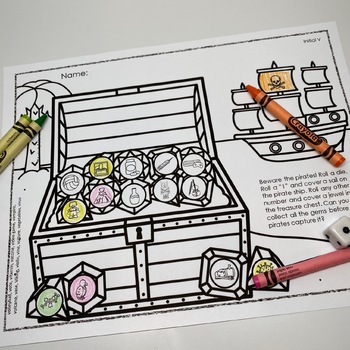
As you know, even the most intricately planned speech sessions and thought-out goals cannot overcome a student who is unmotivated in speech sessions. Figuring out how to empower students in speech therapy is a delicate balance of providing support while also promoting independence. As you address passivity, avoid being the sole motivator for success, reduce caregiver stress, establish quality home programs, and implement speech stations, you will set your speech students up for life-long success as they take control of their goals and learn to communicate effectively.
- Address Passivity
- Avoid Being the Sole Motivator
- Reduce Stress on Caregivers
- Review and Reinforce at Home
- Create Speech Stations
Address Passivity to Empower Students in Speech Therapy
Passive learners often struggle to make meaningful progress. As their SLP, you can help students move past passivity by making sure they are fully aware of the purpose of each of your sessions together.
Start by clearly communicating the child’s goals from the beginning of your time together and frequently revisiting them together with the student.
Be transparent and let them know what you will be working on at the beginning of each session, and then ask them, “What are we working on today?” a few times throughout to ensure they understand.
This simple question will help transform students from passive learners to active participants, allowing them to be more engaged in therapy. This leads to more effective outcomes!
Avoid Being The Sole Motivator of Good Speech
The next step to empowering students in speech therapy can feel tricky…
Don’t let yourself become the sole motivator or “trigger” for good speech. You risk falling into this role when you handle all homework reminders and work during sessions. To counteract this, you must empower students to recognize when and how to use their new skills outside your therapy room.
THIS is where the real magic (and carryover) happens!

Reduce Caregiver Stress
Often a wonderful byproduct of children becoming empowered in their progress and success is decreased stress on caregivers!
Even if caregivers need to provide feedback or be involved in the home activities, having the child take charge of reminders or initiating this practice can be a huge help.
This piece of empowerment will create a more collaborative therapeutic process and promote independence for students.
Review and Reinforce at Home
Home practice is vital to reinforce the empowerment you work towards in therapy sessions!
Review what you want students to do at home during your sessions. This might include quickly reviewing a worksheet or providing a copy of what you’ve already done in the speech room or assisting the student in making a visual reminder to take home.
Worksheets and games designed for independent play provide students with a hands-on way to practice their skills. One-player games are the perfect solution for multi-use by using magnetic chips during therapy sessions and then sending them home for the child to play again with crayons.
These independent options foster a sense of ownership and responsibility that working in groups at school or drilling skills with parents simply do not. Home practice is also a huge piece of answering the infamous parent question “How long will therapy take?”.
Create Speech Stations
And finally, speech stations are a creative way to reinforce skills learned. These stations are designed to be set up around the school. Sheets with articulation targets strategically placed in high-traffic areas can serve as visual reminders and opportunities for spontaneous speech practice!



Examples of high-traffic areas:
- Where students wait in lines for bathrooms
- Where students line up to head to recess
- Outside of specials (art, music, PE, etc.)
Keep the formatting of the pages consistent so students quickly know where to look on each page to find their speech or language targets.

For example: initial S words are always in the top left of the page
When locating their targets, students know to say the word quietly to themselves. Inform the school staff of these speech stations to promote reinforcement and create a school-wide culture that supports speech and language development!
Every 3 weeks change the sheets to maintain engagement from students.

Fostering independence is vital for sustainable progress. Learning how to empower students in speech therapy is not just about improving speech skills but ensuring that these skills become integral to their daily lives. Using creative strategies like speech stations and one-player games can set up children for success as they work independently towards their progress and success. As the SLP, you pave the way for confident and independent communicators!

You may also be interested in reading:
4 Tried-and-True Strategies for Effective Carryover in Articulation Therapy
Embracing Neurodiversity in Speech Therapy and Beyond
Teaching Attributes in Speech Therapy
TOP 3 Tips SLPs Need to Know for Writing Progress Notes







